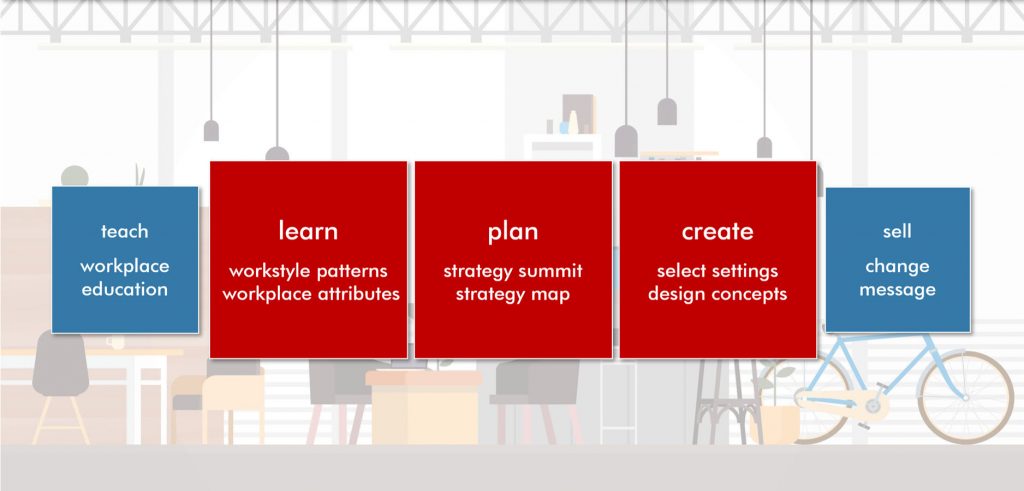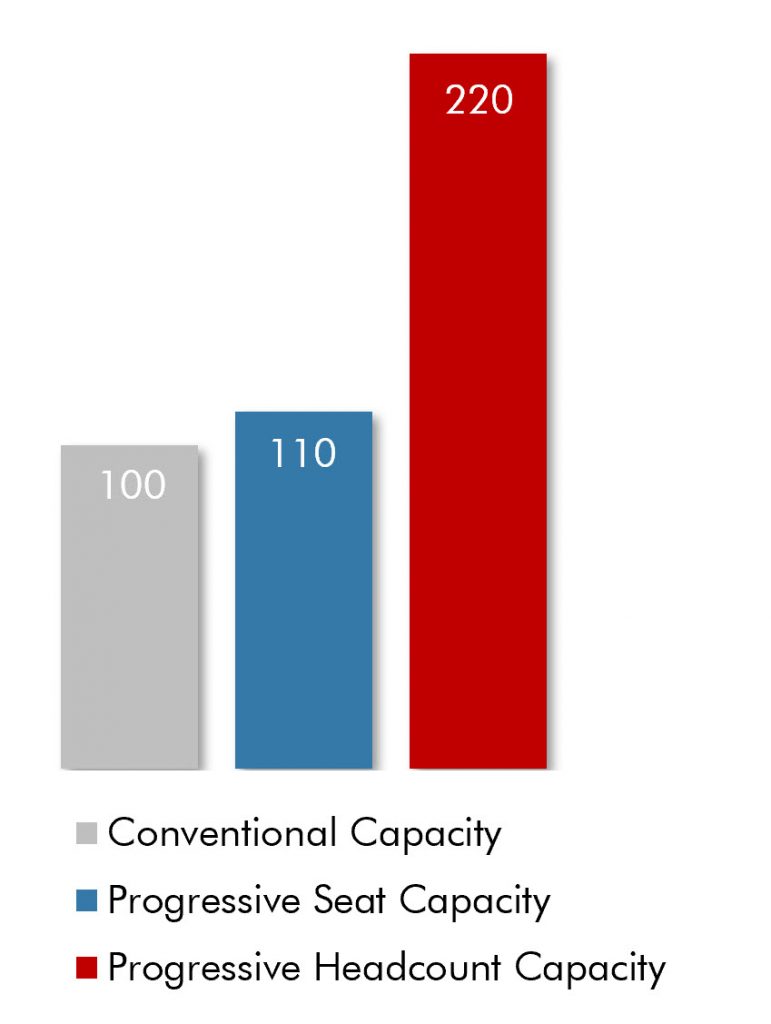A successful workplace strategy focuses on mobility and collaboration patterns rather than conventional headcount projections and workstation size. The result is a progressive workplaces composed of a rich variety of free-address settings where people can chose where and when to work.
Workplace Strategy Process
Dr. Margaret Serrato has worked with many companies to address the challenges of space utilization and employee engagement using a simple process to create engaging, cost-effective workplaces.

What are the goals of a progressive workplace strategy?
Increasing Space Utilization

Over the past few years, companies have seen workplace utilization fall dramatically, especially as people have access to better technology and seek out more control over when and where they work. And as we all deal with concerns over the spread of infection at work, utilization is likely to stay low for some time.
We know that the average utilization of a workstation in the US is around 36%. This provides a huge incentive for companies to transform their conventional workplaces into progressive workplaces where headcount capacity can be increased dramatically with only slight changes to seat capacity.
Enhancing Innovation and Employee Engagement
As we increase headcount capacity by shifting to unassigned settings, we should also provide lots of choice, with a variety of open and closed, individual, group and community spaces to support innovation and engagement.
Avoid using rows of similar workstations or benches. People want variety and choice to be happy in free-address workplaces. Don’t forget the coffee!

Workplace Strategy Resources
Download these PDF’s to see more information on AreaLogic’s Workplace Strategy process as well as recent project case studies.
